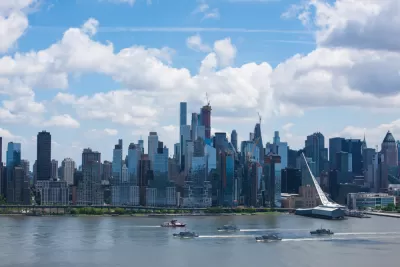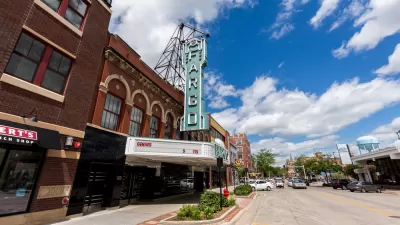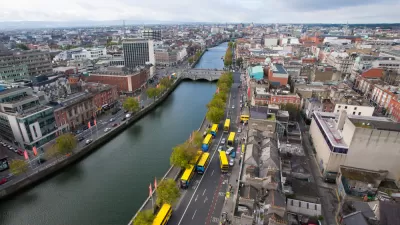A record period of U.S. economic prosperity has reshaped the economy of the U.S., in particularly obvious patterns at the metropolitan level. A new Brookings report details the way metro areas have changed.

Alan Berube writes to share news of the latest release of the Brookings Institution's Metro Monitor 2020 report on March 5. According to Berube, the report reveals the story of over a decade of economic expansion in the United States, with very large metropolitan areas leading the growth.
On the three growth indicators—changes in GDP, jobs, and jobs at young firms (a proxy for entrepreneurship)—very large metro areas overall outpaced large metro areas, which in turn outpaced midsized metro areas. The same pattern prevailed for prosperity indicators, including changes in average annual wages, output per job (productivity), and output per capita (standard of living). And in overall inclusion, the same positive relationship with metro area size characterized changes in the adult employment rate and median earnings.
Berube's article supplements the website set up to host the new report. The main report's site includes interactive infographics—like the Metro Monitor 2020 Dashboard, for example—which allows breakdowns on demographic performance for specific metropolitan areas. Interactive infographics also present economic data for metropolitan areas and an overall growth index.
Since publication, Patrick Sisson covered the report for Curbed and Stephen Lee Davis promoted the report's findings for Strong Towns.
FULL STORY: Metro Monitor 2020: Prosperity is increasing in America’s largest metro areas, but not for everyone

Study: Maui’s Plan to Convert Vacation Rentals to Long-Term Housing Could Cause Nearly $1 Billion Economic Loss
The plan would reduce visitor accommodation by 25% resulting in 1,900 jobs lost.

Alabama: Trump Terminates Settlements for Black Communities Harmed By Raw Sewage
Trump deemed the landmark civil rights agreement “illegal DEI and environmental justice policy.”

Why Should We Subsidize Public Transportation?
Many public transit agencies face financial stress due to rising costs, declining fare revenue, and declining subsidies. Transit advocates must provide a strong business case for increasing public transit funding.

Paris Bike Boom Leads to Steep Drop in Air Pollution
The French city’s air quality has improved dramatically in the past 20 years, coinciding with a growth in cycling.

Why Housing Costs More to Build in California Than in Texas
Hard costs like labor and materials combined with ‘soft’ costs such as permitting make building in the San Francisco Bay Area almost three times as costly as in Texas cities.

San Diego County Sees a Rise in Urban Coyotes
San Diego County experiences a rise in urban coyotes, as sightings become prevalent throughout its urban neighbourhoods and surrounding areas.
Urban Design for Planners 1: Software Tools
This six-course series explores essential urban design concepts using open source software and equips planners with the tools they need to participate fully in the urban design process.
Planning for Universal Design
Learn the tools for implementing Universal Design in planning regulations.
Smith Gee Studio
Alamo Area Metropolitan Planning Organization
City of Santa Clarita
Institute for Housing and Urban Development Studies (IHS)
City of Grandview
Harvard GSD Executive Education
Toledo-Lucas County Plan Commissions
Salt Lake City
NYU Wagner Graduate School of Public Service





























